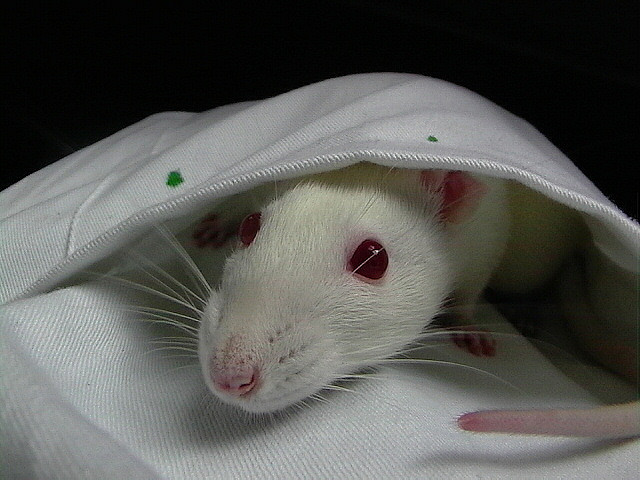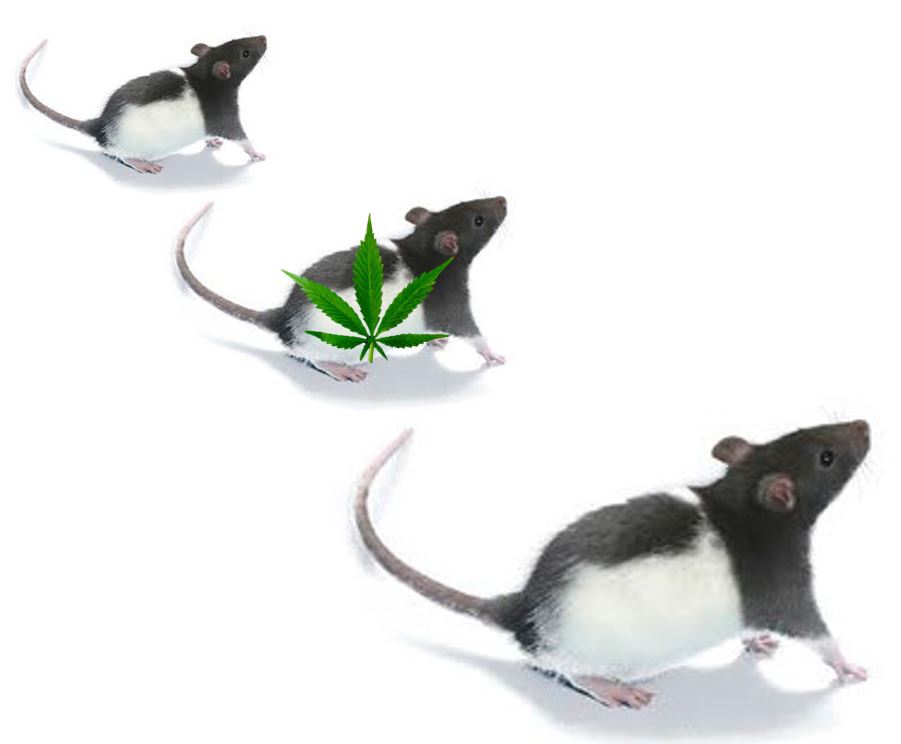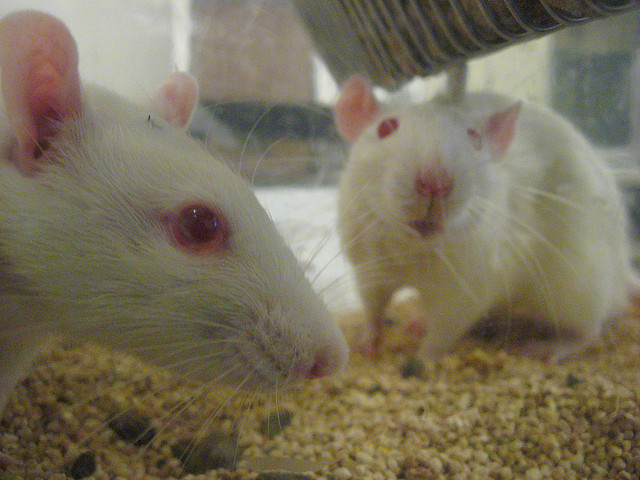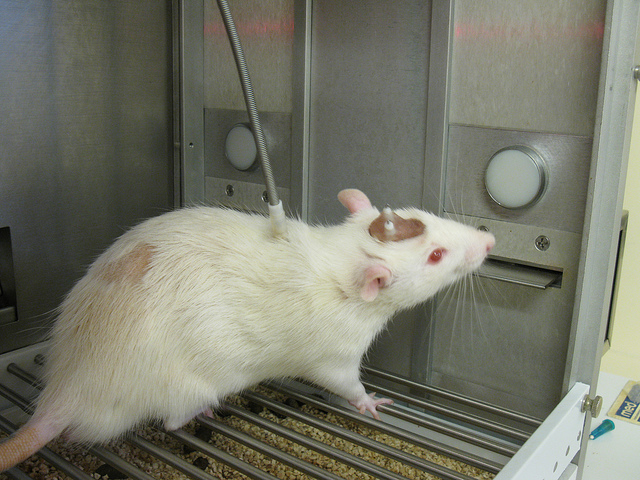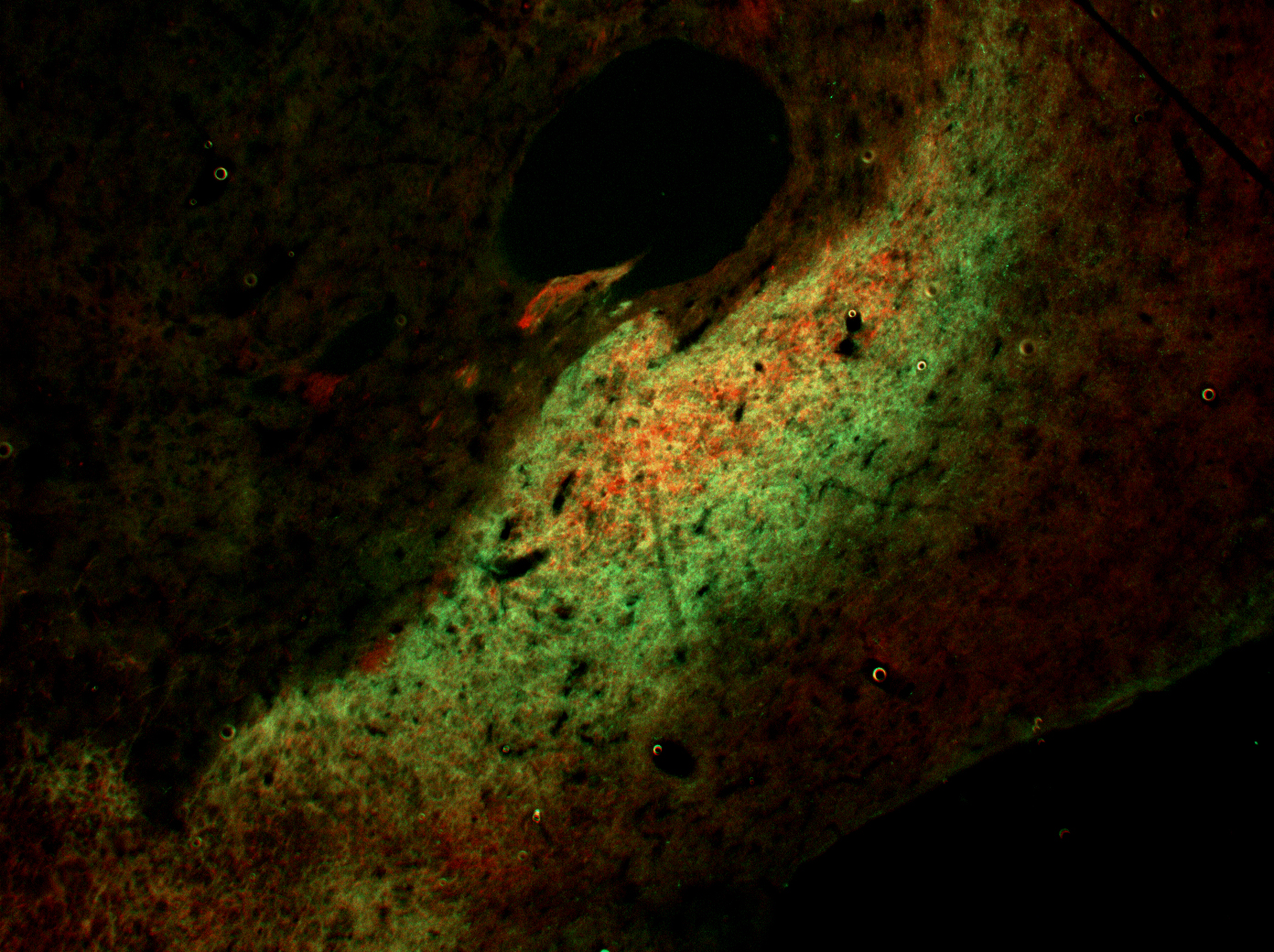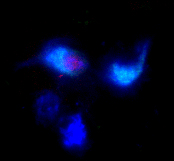What Causes Addiction?

Behavioral Neuroscience:
Experimental psychology is over 100 years old, and pioneers of this field have developed means to infer psychological processes underlying behavior by examining rats performing under carefully arranged circumstances. Our lab employs modern neuroscience tools to dissect the neural circuits underlying reward- and addiction-related psychological processes.
DREADDs and Optogenetics:
Around 15 years ago, scientists discovered that neurons can be controlled by genetically modifying them to be sensitive to light or synthetic chemicals. Genetically modified viruses can infect neurons, causing them to produce light-sensitive ion channels (opsins) or G-protein receptors with no endogenous ligand (Designer receptors exclusively activated by designer drugs, or DREADDs). Both of these strategies allow us to experimentally manipulate the firing rates and neurotransmitter release of selected populations of neurons, during behavior or monitoring of neuronal activity.
Functional Neuroanatomy:
The brain is thought to function via communication between populations of neurons, forming circuits connecting brain regions to one another. We are interested in 1) which pathways underlie specific behaviors related to reward or addiction, 2) which subpopulations of neurons (e.g. with different neurochemical phenotypes) participate in these circuits, and 3) how do these circuits interact with one another.
To examine these questions, we use tract-tracing to identify anatomical projections, Fos immunohistochemisty to identify their activity during behavior, and viral-based strategies including DREADDs and optogenetics to manipulate this activity during behavior. We also employ anesthetized electrophysiology to measure firing of neurons during pharmacological and virus-based manipulation of their neuronal inputs.
Adolescent Cannabinoid Exposure:
Given recent changes in laws regulating cannabis in the US, and mounting evidence suggesting that exposure to cannabinoid drugs during adolescent brain development can cause permanent changes in brain circuits, we have begun to examine long-lasting changes in brain reward circuits and behavior.
Toolbox:
DREADDs/Optogenetics: Viral vectors can be used to express synthetic receptors or channels in phenotypically-defined neuronal populations in specific brain regions, allowing us to excite or inhibit them at will during behavior or electrophysiological recordings.
Rat Behavioral Models: drug and food self-administration, food intake behavior, sexual approach, aversive behaviors, operant and Pavlovian learning, place preference conditioning, etc.
Behavioral Pharmacology: Using drugs, especially specific agonists or antagonists of receptors systems to explore the neurochemical substrates of behavior or neuronal/circuit activity. Typically, we painlessly inject tiny droplets of drug directly into a brain area of interest in an awake rat, and examine effects on neuronal activity and/or behavior.
Immunohistochemistry: Using antibodies and chromogenic or fluorescent tags, we can identify specific proteins in brain cells. This allows us to identify cell types, virus expression, and recent neuronal activity (Fos)
Tract Tracing + Fos Protein Expression: Using chemicals that selectively travel anterogradely (from the soma towards axonal terminals) or retrogradely (from axon terminals to soma), we can identify specific projections from one brain region to another. We can also quantify c-Fos (a protein marker of neuronal activity) in neurons that project to another brain region, in order to identify pathways activated during specific behaviors.
